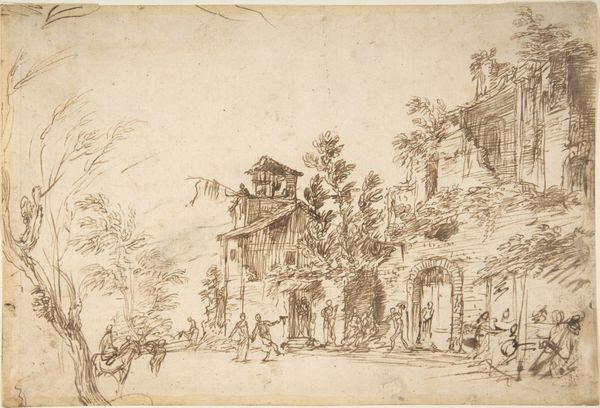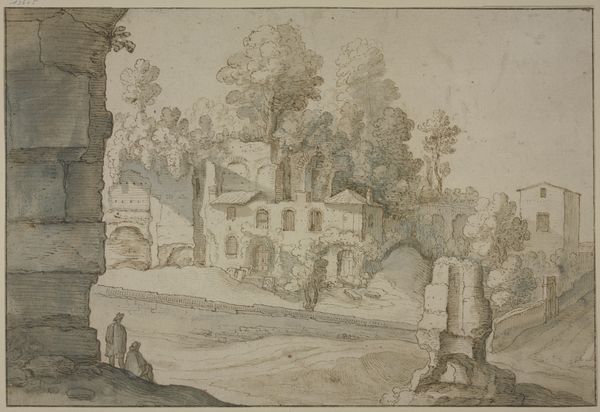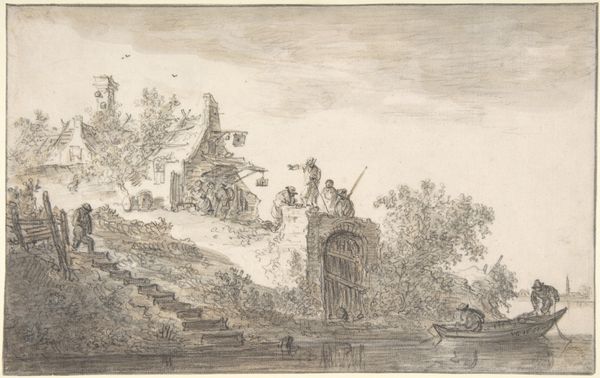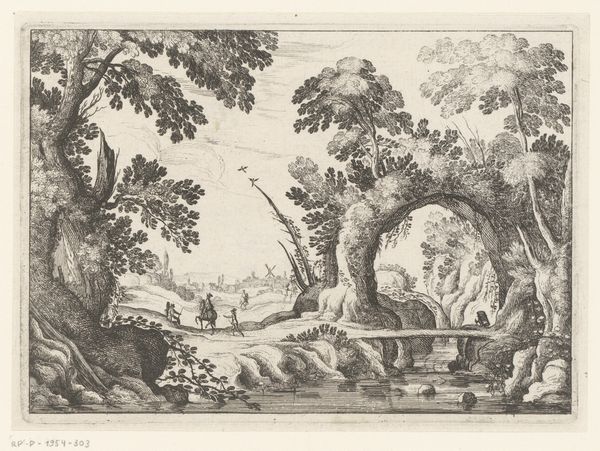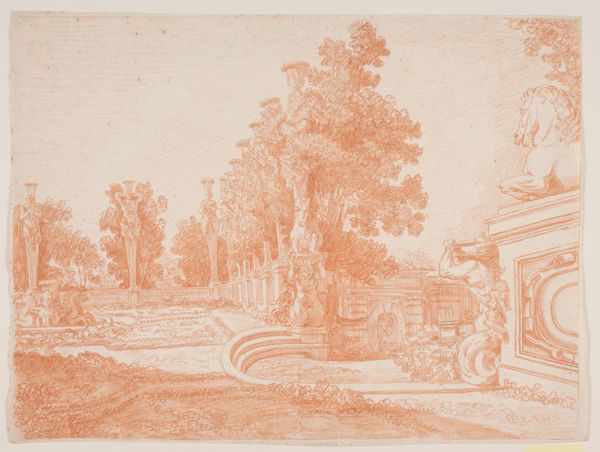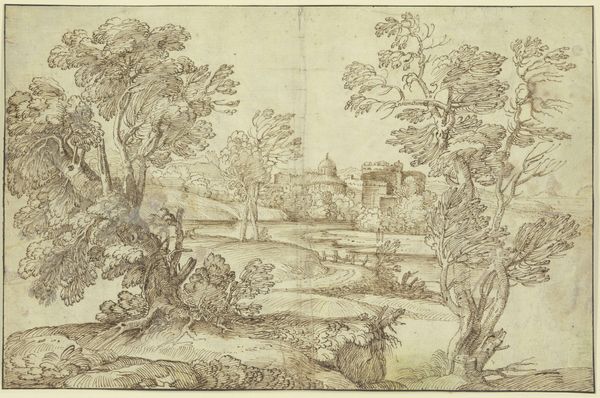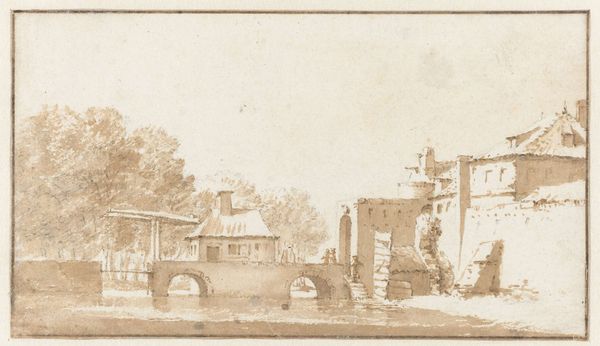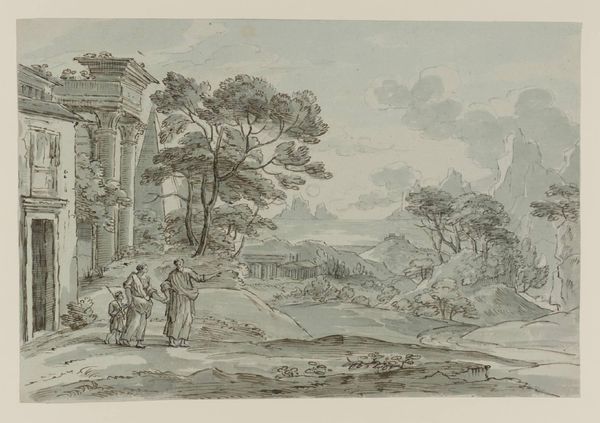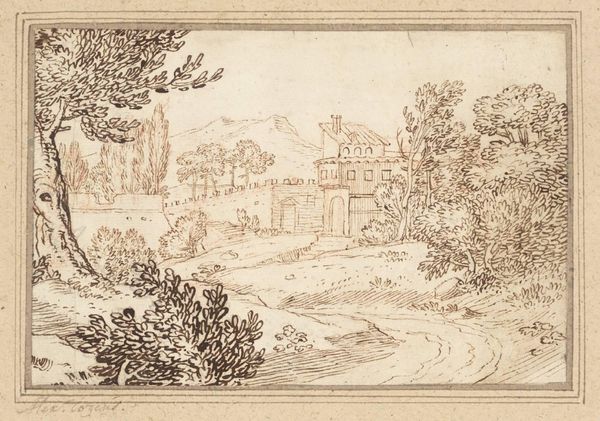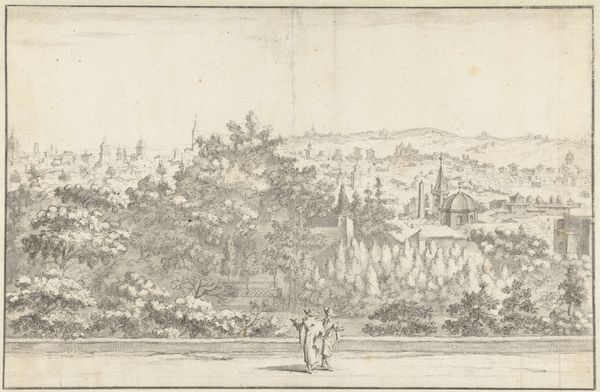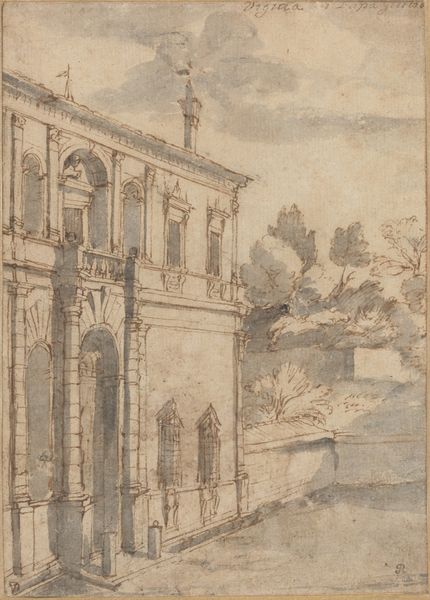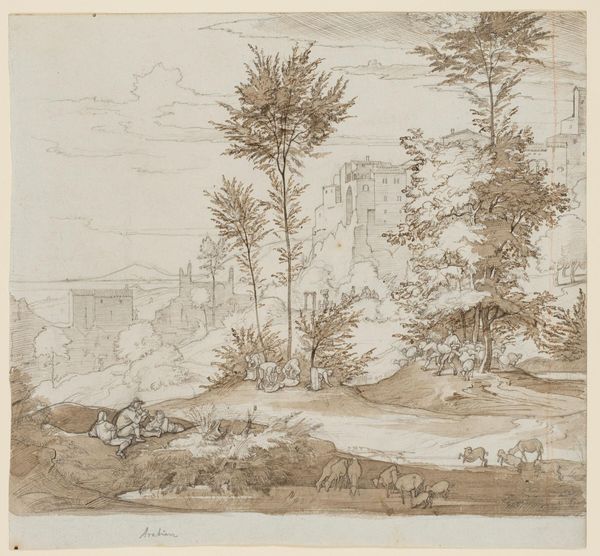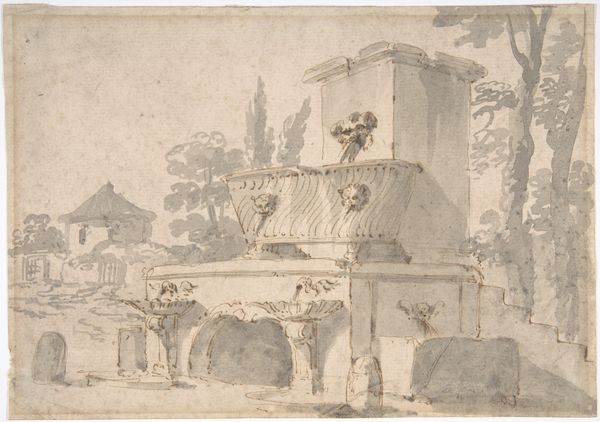
Classical Landscape with Temples (recto); Indecipherable sketch, possibly of a seated figure (verso) 1755 - 1757
0:00
0:00
drawing, print, ink, architecture
#
drawing
#
neoclacissism
# print
#
landscape
#
figuration
#
ink
#
architecture
Dimensions: Sheet: 5 11/16 x 8 in. (14.4 x 20.3 cm)
Copyright: Public Domain
Curator: Before us is Robert Adam’s "Classical Landscape with Temples," created between 1755 and 1757. It’s currently held here at The Met. Editor: Immediately, the muted tones of the ink wash strike me—it's all very subtle, almost ghostly in its depiction of classical grandeur. You can almost feel the rough texture of the paper too. Curator: Yes, the material handling really lends to the piece’s narrative. This was made during Adam’s Grand Tour, when he was absorbing classical forms, philosophies, and their power dynamics to, in his way, revolutionize British architecture and design upon his return. Editor: The act of sketching itself becomes part of that process, doesn’t it? A means of absorbing, of almost dismantling and then reconstructing what he’s seeing through his own hand and eye. Note the way the architecture feels…light. It's rendered economically in line and wash, reflecting its status as an object for observation. Curator: Precisely! It’s about appropriating and filtering that classical authority for a British context. Consider the way he depicts leisure. Boating, promenading…it suggests a deliberate construction of class, power and access to beauty, echoing debates in travel, social hierarchy and the accessibility of art and classical thought itself during the enlightenment. The ink wasn’t just documenting, it was creating. Editor: Right. The creation and recreation, physically transforming space through line and shade. The classical forms serve less as immutable ideals than as malleable raw materials, ready to be refashioned to suit specific needs. Curator: The verso even features an indecipherable sketch – perhaps revealing the exploratory labor of artistic invention, the humanistic and theoretical foundation, as a way to ground the piece? Editor: Indeed, this isn't just about looking, but actively making – a point about control. These drawings became his means to a more powerful end. Thanks for the new outlook. Curator: The drawing reveals how Adam transformed and materialized historical understanding through this landscape. My pleasure.
Comments
No comments
Be the first to comment and join the conversation on the ultimate creative platform.
